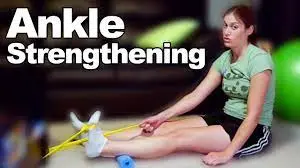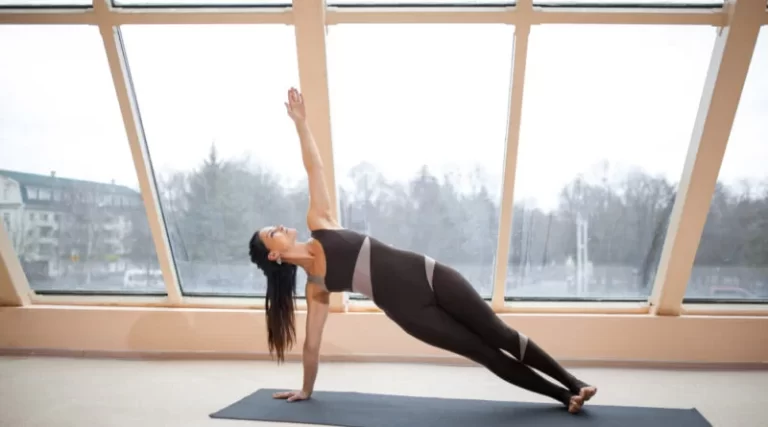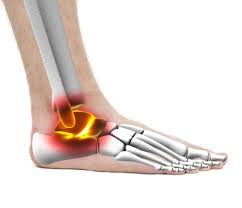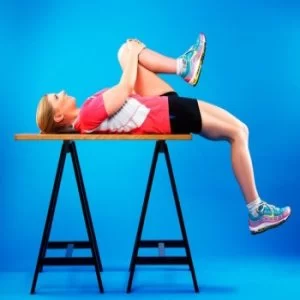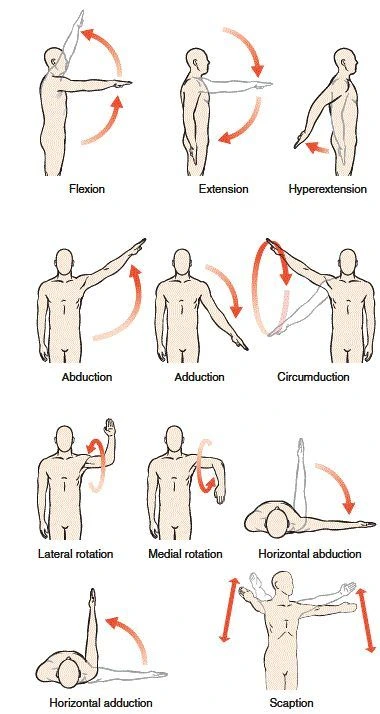The Best Exercises for Strong, Healthy Ankle Joints
Ankle strengthening workouts can help people with pain, injury, or mobility issues. People can perform most of these exercises at home.
The ankle is a most weight-bearing joint that is made up of various bones, tendons, and ligaments. Jointly, these structures carry the weight of the body while allowing an individual to move.
In this article, we discuss the benefits of ankle-strengthening exercises and Explain a list of exercises to support the ankle’s strength and health.
Introduction
Ankle strengthening training is an essential part of recovering from an ankle injury. Without them, you may be prone to harming your ankle again. The ankle joint is the main weight-bearing joint. Its role and structure make it vulnerable to injury, especially during movements like jumping and running.
Every year, an assessed two million people sprain, strain, or fracture an ankle. Between 20% and 80% of them will be left with chronic ankle instability. That makes the joint more vulnerable and more prone to injury. However, the proper stretches and ankle strengthening activities can reduce your risk of re-injury.
Anatomy
Your ankle functions as the connecting point between your foot and lower leg. Sometimes it is referred to as the talocrural joint or the tibiotalar joint by doctors.
What is the structure of the ankle joint?
Your ankles are made of:
- Bones.
- Cartilage.
- Ligaments.
- Muscles.
- Nerves.
- Blood vessels.
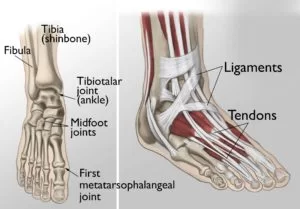
Bones in the ankle
Three bones make up your ankle joint:
- Tibia (shin bone).
- Fibula (calf bone).
- Talus.
Cartilage in the ankle
Your joints are protected by the strong, flexible tissue known as cartilage. It acts as your body’s overall shock absorber. Your ankle is lined with hyaline cartilage. The most common type of cartilage in your body is hyaline cartilage. Some healthcare providers call it articular cartilage. It covers the ends of your bones and lines the joints. Your tibia, fibula, and talus have hyaline cartilage lining on their contact surfaces.
Ligaments in the ankle
The bones in your foot and the bones in your lower leg are joined by ligaments in the ankle.
Your ankle has three primary groups of ligaments:
- Medial ligaments (deltoid ligaments):
- Lateral ligaments:
- Syndesmotic ligaments
The movements of your ankles are controlled by muscles in your legs and feet.
You can flex your foot downward and away from your body thanks to the plantarflexion muscles.
- Gastrocnemius.
- Soleus.
- Plantaris.
- Tibialis posterior.
- Flexor digitorum longus.
- Flexor hallucis longus.
- Peroneus brevis.
- Peroneus longus.
Muscles that help in dorsiflexion movement They include the:
- Tibialis anterior.
- Extensor digitorum longus.
- Extensor hallucis longus.
- Peroneus tertius.
Nerves in the ankle
- Tibial nerve.
- Superficial peroneal nerve.
- The deep peroneal nerve.
Blood vessels in the ankle
- Anterior tibial artery.
- Posterior tibial artery.
- Peroneal artery.
Here are some causes of both ankle injury and ankle weakness.
- muscle around an ankle joint that is tight or stiff
- Ankle sprains
- Some congenital abnormalities in an ankle joint.
- Overuse of the ankle joint
- Osteoarthritis
- Rheumatoid arthritis
- Gout
- Lupus erythematosus
- Previously injured ankle joint.
- Poor walking pattern
- Wearing incorrect footwear.
Benefits of ankle strengthening exercises
Some potential benefits of ankle-strengthening exercises include the following:
- Injury prevention: By making the muscles around the ankles stronger, injuries can be avoided by putting less strain on the ankle joint.
- Improving bone density: Exercises that focus on building strength can help to increase bone density. Degenerative bone diseases like osteoarthritis are less likely to develop in those with higher bone density.
- Improving balance: Strong ankle muscles should improve balance. For many types of sports and workouts, good balance is essential. Additionally, it will lessen the chance of accidents and falls.
Here we describe different Ankle strengthening exercises:
Here we describe various exercises that may help enhance the strength and mobility of the ankles. A person can perform these exercises at home without the requirement for specialist fitness tools.
Towel curls
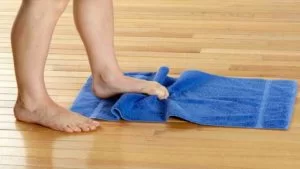
- To initiate this exercise you have to sit in a chair with feet flat on the floor.
- Put a towel beneath one of the feet.
- To take the towel off the base, curl the toes inward to grab it.
- Hold it there for a brief period then release it.
- Repeat with the other foot.
Golf ball roll
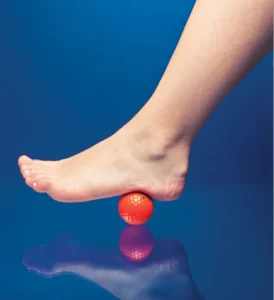
- The muscles located in the soles of the feet and ankles are feeling stretching during this exercise.
- Put a golf ball under one foot while seated in a chair. Any ball that is the same size will do.
- Spend a minute slowly rolling your foot over the ball.
- Use the other foot to perform the exercise again.
Star Exercise
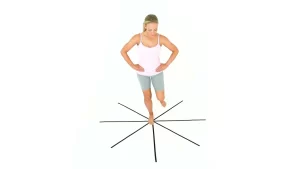
- This exercise can be started in a standing position in the quarter squat with the feet hip-width apart as well as the slight bending of the knees. After that, push the foot into the floor & jump with an explosive movement.
- During mid-air, you have to completely extend the arms as well as legs out to form the star shape.
- Ten to fifteen repetitions of one to two sets are required. Next, slowly you will improve the number of repetitions of this movement.
Squats on the Balance Board
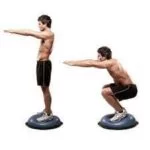
- To do this exercise, you require the balance board or even a wobble board with one fulcrum motion.
- You have to stand on a wobble board as well as flex the knees until the thighs are parallel to the floor then gradually stand up.
- Then, you have to complete ten to fifteen squats without allowing either edge of a board to touch the floor.
- Slowly you may increase the repetitions.
Non-Weight Bearing Dorsiflexion
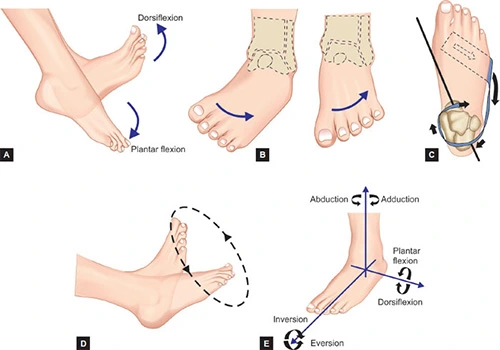
An easy ankle-strengthening activity is ankle dorsiflexion the movement of flexing your ankle up toward your shin. Making this movement can assist you in recovering the ability to walk normally again.
- Take a supine lying position. Extend your knee.
- Pushing only your ankle, point your foot back toward you. Continue until you feel pain or can’t tilt it back any further.
- Maintain this position for 10 seconds.
- Return to an initial position. Repeat 10 times.
Non-Weight Bearing Plantar Flexion
- This action involves pointing your ankle down and away from you. It can assist you in enhancing your range of motion (ROM). Take a supine lying position.
- Extend your knee.
- Moving only your ankle, point your foot forward. Continue until you feel discomfort or can not move it any further.
- Hold this position for fifteen seconds.
- Return to an initial position.
Non-Weight Bearing Inversion
- Inversion is the movement of pointing your ankle inwards toward the center of your body.
- Moving only your ankle and holding your toes pointed up, turn your foot inward. The sole of your foot should be facing your additional leg. Continue until you either feel discomfort or can no extent turn your foot inward.
- Maintain this position for fifteen seconds.
- Return to the initial position and repeat ten more times.
Non-Weight Bearing Eversion
Eversion is the movement of moving your ankle to the outside part of your leg. This practice can help you gain outward motion in your ankle.
- Moving only your ankle and maintaining your toes pointed up, turn your foot outward, away from your opposite leg. Continue until either you sense discomfort or you can no longer turn your foot outward.
- Maintain this position for 15 seconds.
- back to a neutral position.
The Alphabet
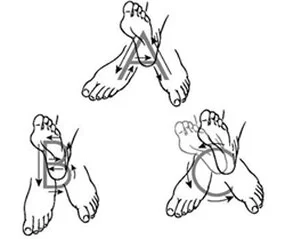
- Another common ankle-pulling exercise is the ankle alphabet. It allows you to gain ankle mobility in all directions.
- Seat on a chair or a bed with your foot sagging off the edge.
- Then, draw the alphabet one letter at a time by moving the affected ankle.
- Ankle rehabilitation should be performed slowly and carefully. Rehabilitation programs generally start with non-weight-bearing ankle motion activities and then move to weight-bearing exercises. You can raise repetitions as you get more powerful.
Eversion Isometrics
- Ankle-strengthening activities usually begin with isometric contractions. This means that when you flex your muscles, your ankle joint does not move.
- Eversion concentrates on pushing the ankle outward.
- While seated, put the outside of the damaged foot against a table leg or closed door.
- Move outward with your foot into the object your foot is against. This will make your muscles contract. Your ankle joint should not push.
- Maintain this position for 10 seconds.
- Relax for 10 seconds.
You may perform these movements early after injury or surgery. They permit you to gently and safely add force to the muscles that keep your ankle.
Inversion Isometrics

This exercise focuses on inversion, which involves pulling the ankle inside, to strengthen the ankle.
- In a seating position place the inside of the affected foot against a table leg or closed door.
- Move inward with your foot into the thing your foot is against. This will make your muscles contract. Your ankle joint should not move.
- Maintain this for 10 seconds.
- Relax for 10 seconds.
Resisted Strengthening Dorsiflexion
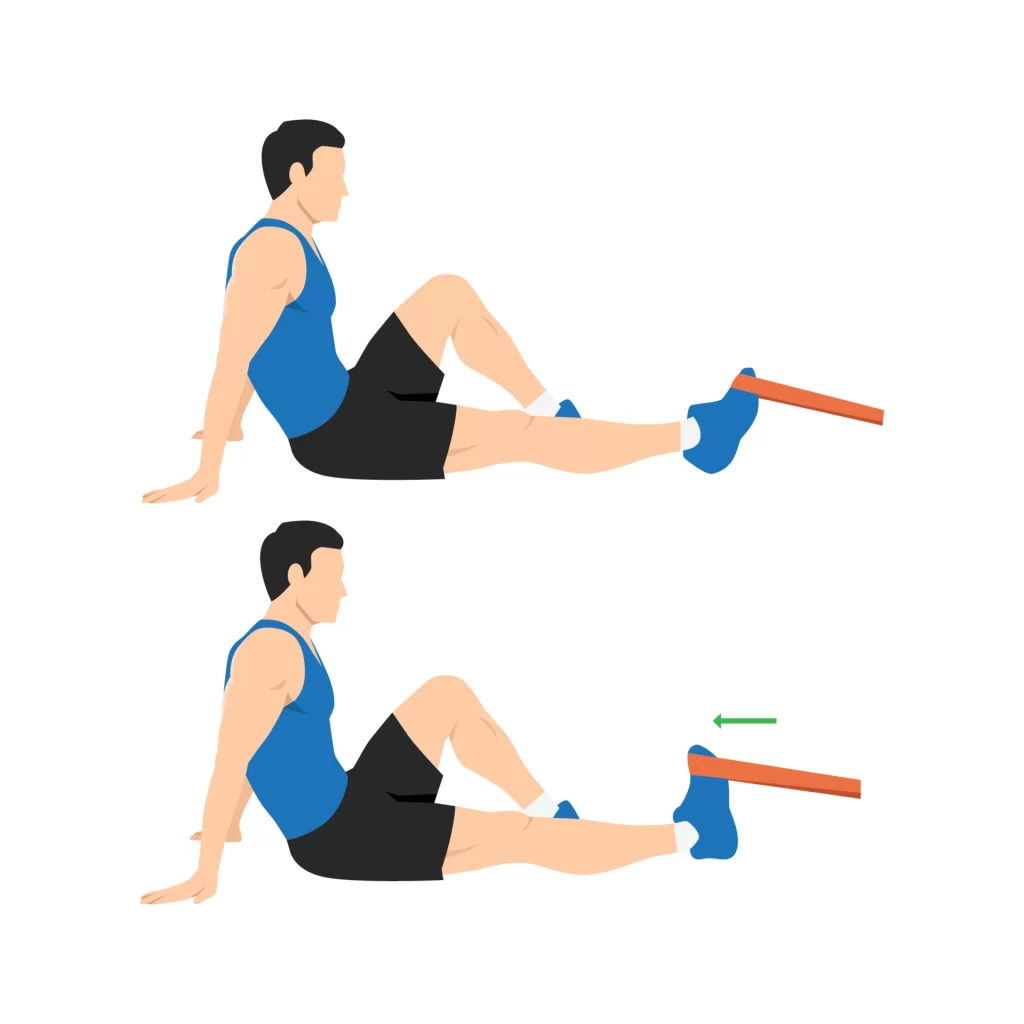
- You should exercise your ankles with resistance using a theraband, a thick elastic band. These workouts support your ankle joint by strengthening the muscles around it.
- Each exercise should be repeated ten to fifteen times.
- Never tie a Theraband or anything else in a way that would impede blood flow around your foot, ankle, or leg.
- The muscle in the front of your shin, the anterior tibialis, is strengthened by this resistance exercise.
- Wrap the band around the leg. Place your foot inside the band so that the top of the foot is covered by it.
- Keep your knees straight and simply move your ankle to point your foot back towards your nose. Continue doing so until you experience pain or reach your limit.
- Hold this posture for two seconds, then release gradually.
- Go back to the default setting. Repeat.
Resisted Strengthening Plantar Flexion
- The large tendon at the back of your ankle, the Achilles tendon, and your calf muscles are both strengthened via resisted ankle plantar flexion. A Theraband is also used to offer resistance. Holding the band in your hands, loop it under your foot.
- Keep your knees straight and simply move your ankle to point your foot forward. The calf muscle behind your lower leg could feel tight. Continue doing so until you either experience discomfort or reach your limit.
- For two seconds, maintain this posture.
- Go back to being neutral.
Resisted Strengthening Inversion
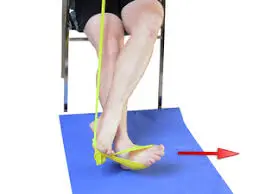
- wrap the exercise band under your foot and grab the ends with your hands.
- Moving only your ankle and holding your toes pointed up, turn your foot inward so the sole is facing your other leg. Persist until either you feel pain or you can no extended turn your foot inward.
- Maintain this position for 5 seconds.
- Return to an initial position.
Resisted Strengthening Eversion
A resisted eversion strengthens in the outer direction.
- wrap the resistance band under your foot and grab the ends with your hands.
- Moving only your ankle and keeping your toes pointed up, turn your foot exterior, away from your additional leg. Continue until either you feel pain or you can no longer turn your foot outward.
- Maintain this position for 5 seconds.
- Return to an initial position.
Partial Weight-Bearing Seated Calf Raises
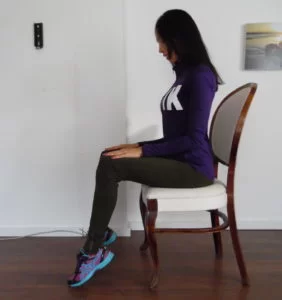
This exercise helps you put more weight on the affected ankle. This is also used for ankle strengthening. You should do each one 10 times in a row.
- Seat in a chair with the affected foot on the ground.
- Raise your heel as much as possible while keeping your toes on the ground.
- Return your heel to the ground.
Partial Weight-Bearing Standing Weight Shift
- Many times after an injury, you may have to restrict how much weight you put on your injured leg. This can help save your ankle as it heals.
- Then, you can slowly improve weight bearing on your affected ankle.
- You’ll be able to stand up straight by holding onto something sturdy Put part of your weight on the foot that is hurt.
- For 15 seconds, maintain the position. Then back to the initial position.
Full Weight-Bearing Single Leg Stance

These exercises will assist in putting more weight on the affected foot. You should be sure your ankle can handle the pressure before you put your full weight on it.
- Stand on the damaged foot while raising the uninjured foot off the floor.
- Hold the position for 15 seconds.
- Relax and give your weight back onto your normal foot. Perform this exercise on each leg ten times in a row.
Full Weight-Bearing Standing Calf Raises

- Try calf raises once you can bear your entire body weight.
- Lift the unharmed foot off the ground and stand on the affected foot.
- Lift your heel off the ground while standing only on the affected foot’s ball as you stand up.
- For 15 seconds, maintain the position.
- stay balanced and move your weight back to your healthy foot.
Full Weight-Bearing Lateral Stepping
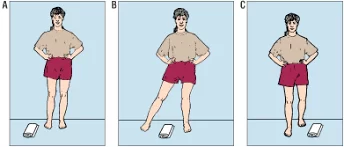
- This exercise involves stepping side to side to strengthen the ankles.
- Set down a towel or other short object on the ground to the side of your injured foot.
- Step over the towel with the wounded foot, which you are standing on.
- Step your uninjured foot over the object and then stand up straight.
- Step back over the towel while staying on the foot that isn’t sore.
- After that, cross the injured foot over the towel once more and stand tall on both feet.
- You can quicken this workout as your recuperation progresses.
Full Weight-Bearing Lateral Jump
- This plyometric ankle strengthening workout introduces jump training to your rehabilitation regimen. You may be able to resume jogging and other sports as a result.
- Put a rolled towel or other short object on the ground next to your injured foot.
- Jump over the towel, then step onto the hurt foot.
- Jump over the towel once more, landing on the healthy foot.
- As your recuperation progresses, speed up this workout.
Single Leg Stance on a Towel
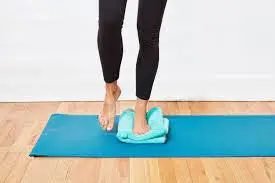
- Ankle injuries often affect your balance. Balance activities can help prevent future injury. Do these as your recovery comes to a close.
- A towel is folded into a small rectangle and laid on the floor.
- Place your affected foot on the towel as you stand.
- Lift the uninjured leg off the ground. With the affected leg only, stand only on the towel.
- Maintain for 15 seconds. Improve your balance by extending the time to 45 seconds.
- Return your uninjured foot to the floor.
Perform this exercise 10 times in a row. When you are ready, up the difficulty by standing on more wobbly surfaces, such as a wobbleboard.
Your physical therapist may also have you use a (Biomechanical Ankle Platform System) while working on balance exercises.
Tips for Exercise Safety & Injury Prevention
- Proper training technique is important to secure the safety as well as efficacy of the exercise, but you may need to modify each exercise to get optimal results based on the needs.
- You may select the weight that allows you to smooth as well as control motion.
- If you want continual improvement as well as build body strength, after that incorporate proper warm-ups, rest, & nutrition into your exercise schedule.
- You have to rest for two to three hours before embarking on the same muscle group exercise.
- Your muscles need some rest to recover after the workout.
When you should not do this exercise?
- If you were recently injured.
- If your lower limb surgery is done recently.
- f you have a balance issue.
- If your doctor advised you to rest.
Summary
Tight or weak ankle muscles can generate pain and difficulties with mobility. These problems may also improve the risk of injury to the bones, tendons, and ligaments of the ankle.
Stretching and strengthening the ankle muscles helps enhance ankle joint mobility and decreases the risk of injury. It may also help improve bone density, thereby decreasing the risk of degenerative bone diseases.
People should aim to include ankle-strengthening exercises in their regular workout routine. Those with existing ankle issues can talk to a doctor or physical therapist for more tailored information and advice.
FAQ
When should you begin performing ankle exercises after a sprain?
You can usually begin strengthening and range-of-motion exercises within 48 to 72 hours within pain-free range. Before you start any exercise, consult with your doctor or physical therapist.
Does walking support strengthen your ankles after a sprain?
It depends on how severely sprained your ankle is. Consult your doctor to check when you can put weight on your ankle. You may be required to walk with crutches for the first initial days or weeks after the injury.
Do ankles get weak with age?
Yes, they can weak As you get older, you may originate problems with connective tissues (tendons and ligaments), joints, circulation, and even the skin and toenails, all of which can affect your ankle strength.
Why are ankle movements important?
Ankle stability movements frequently address ankle stability. Stability is necessary for daily activities as well as running and sports. By performing these ankle exercises daily basis you can strengthen weak ankles and help control ankle injuries.
Which muscles help to stabilize the ankle joint?
The tibialis anterior muscle, located in the anterior compartment of the leg, is the prior muscle that promotes dorsiflexion of the ankle joint. The peroneus longus and Peroneus Brevis muscles, located in the lateral compartment of the leg, function to promote the eversion of the ankle joint.
Cycling can strengthen ankles?
Cycle Pedaling strengthens the muscles of the ankle with weight weight-free body. Aquabiking is also a good idea, combining the benefits of both practices.
References
- Kandola, A. (2020, July 23). What to know about exercises to strengthen the ankles.
- Inverarity, L., DO. (2022). Ankle strengthening exercises for ankle injuries.
- Professional, C. C. M. (n.d.-b). Ankle joint. Cleveland Clinic.

